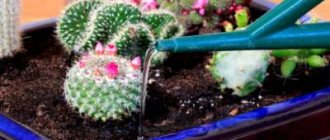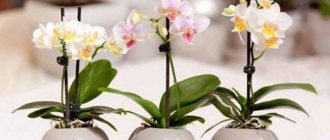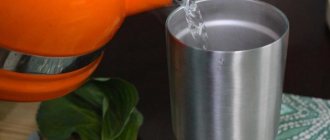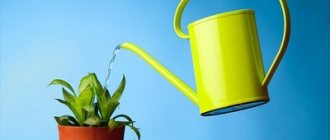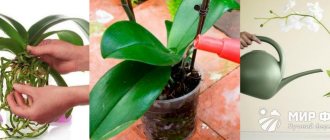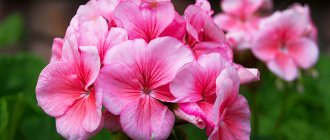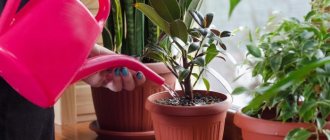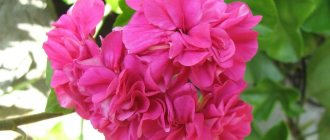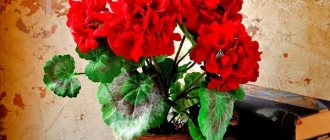Geranium (lat. Pelargōnium), with proper daily care at home, blooms often, continuously and profusely. But what to do so that there is a lot of emerald leaf mass and the plant constantly gains new buds, we will tell you in this material. How can you water geranium so that it has lush and long-lasting color? Every gardener needs to know what folk remedies, pharmaceuticals and fertilizers can be used for this.
In some varieties, the budding process does not occur as abundantly as we would like. Fragrant, double, simple and large-flowered geraniums - all require careful care if you want the plant to be different from others. An important stage in caring for indoor perennials is fertilizing; it should be regular, complete, alternating the application of mineral and organic fertilizers (especially humic acids). Let's figure out what elements are important for geraniums during the flowering period and what fertilizers can affect active, abundant budding.
Many people use iodine, boric acid, hydrogen peroxide, banana skins, yeast, etc. Which of these means has a real positive effect, and which is better to put aside? Let's see through practical experience.
Irrigation regime and rules
It is very important to know how to water geraniums correctly so that they look healthy and bloom profusely.
She loves moisture, but if water lingers around the roots and interferes with the access of fresh air, the roots may become sick and begin to rot. Therefore, the pot must have a good drainage layer and holes so that excess moisture is removed in a timely manner. For watering, it is very convenient to use a special container with a narrow neck; direct the stream of water along the walls of the pot so that it does not get on the leaves and branches.
In the spring, when the plant begins to actively develop, it is watered after the top layer of soil dries to a depth of 1 cm. You can check the humidity with your finger, a wooden stick, knocking on the pot or determining by weight. This usually happens within 2–3 days. As air temperatures rise and growth becomes more active, the need for humidification increases.
But you need to remember that it is best to maintain regular moderate watering, then the plant develops calmly and evenly. It is adversely affected by alternating drought and abundant watering. The more lush the plant and the higher the air temperature, the more often you have to water (it is advisable to first make sure that the top layer of soil is dry).
In summer this can happen every day. With the beginning of autumn, the frequency of watering is reduced and the soil is allowed to dry to a greater depth. When flowering has ended and active growth has stopped, it is advisable to water 2-3 days after the top layer of soil has dried out - that is, simply do not let the roots dry out. The appearance of indoor plants usually shows shortcomings in their care. So, the lack of sun leads to the fact that the geranium stretches out, all the branches are drawn towards it, and the lower leaves fall off. This may not be at all related to a lack or excess of moisture.
If pelargonium does not have enough moisture, its leaves will dry out at the edges. Excess moisture will lead to general lethargy, wilting and yellowing of the leaves. If the roots don't get enough air, they begin to rot - this is what happens when the ground around them is always too wet.
An urgent transplant into new soil will help save the plant. In this case, the roots need to be washed with a weak solution of potassium permanganate, all rotten parts should be cut off, the sections should be treated with charcoal or activated charcoal, and slightly dried. If the plant is overdried, then it can be placed in a tray with prepared water for a while - it will take the required amount of moisture on its own.
Water requirements
When answering the question of how to water geraniums, one cannot fail to mention the quality of water. The flower needs soft and clean water. It should be at room temperature. Flower growers often wonder whether tap water can be used for irrigation. It all depends on its quality.
How to water garden hydrangea correctly
If the liquid is soft enough, does not contain harmful components and does not have an unpleasant odor, it can be used for irrigation. It should first be settled in a separate container. If low-quality water flows from the tap, you should use a cleaning filter and boil the liquid.
Important! Before use, the water must be allowed to stand. This does not depend on whether the liquid used is purified or tap.
You should not use cold water to moisten the soil. Geranium is a tropical flower. Therefore, too cold a liquid provokes rotting of the roots and the development of diseases.
Do not water the bushes with hard water. Its use negatively affects the development of culture. To understand that the hardness exceeds the norm, it is worth assessing the condition of the soil. Due to hard water, salt deposits appear on the soil surface, and the foliage becomes less saturated in color.
Geraniums need to be watered with settled water.
Diseases and pests of pelargonium
Gray rot. Symptoms: the lower leaves become covered with brown spots, which later spread throughout the plant. The leaves change color and dry out. Some areas of the flower are covered with a gray coating. Reasons: waterlogging of the soil, lack of ventilation, increase in nitrogen in the soil. Treatment: treat the flower with fungicidal agents.
Alternaria blight. Symptoms: petioles, leaf margins and leaf blades are covered with dark spots with a light center. The spots have a velvety formation. The leaves change color and dry out. There is no flowering. Causes: problem in the soil. She's infected. Treatment: proper care, treatment with fungicidal preparations.
Rhizoctonia rot. Symptoms: the appearance of dark spots on the stems, they are depressed in nature, the spots rise 25 cm along the stem. Leaves change color and wilt. The plant does not bloom. Cause: contaminated soil. Treatment: soil change, fungicide treatment.
Verticillium wilt. Symptoms: change in leaf color, blackening, wilting, no flowering. Reason: using the same primer for a long time. Treatment: get rid of remnants of vegetation in a timely manner, use clean substrates, and monitor soil moisture.
Rust. Symptoms: clearly shaped reddish spots appear on the plant. Causes: infection through water and air. Treatment: stop watering, trim leaves, treat with fungicidal agents.
Late blight of geranium. Symptoms: rapid decay, dry leaves, stops blooming, depressed spots on the roots. Causes: the infection is in the soil. Improper care, elevated temperature, excess fertilizer. Treatment: use the right soil, ventilate the soil, stop watering, treat with antibacterial drugs.
Rotting of stems and roots. Symptoms: flowering stops, fades, dies. Dark brown depressed formations appear on the neck and root. Later, suppuration of the affected areas begins. Reasons: contaminated soil, improper care, poor lighting, increased air temperature, increased nitrogen readings in the soil. Treatment: reduce watering, treat with fungicidal agents.
Leaf spotting and curling. Symptoms: does not bloom, spots on the leaf, grow over time, have a yellow color, sometimes the structure becomes oily. Causes: changes in leaf nutrition, the plant is affected, infectious insects can carry it. Treatment: treatment with fungicide. When propagating, use healthy plants.
What is pelargonium
Pelargonium is native to African savannas. The heat-loving crop easily tolerates dry air. Plants of this genus have straight and creeping branched stems. They have slightly pubescent leaves, round in shape, palmate or palmately dissected. The color of the foliage of different species varies from light green to emerald. Some representatives of the genus have light leaf blades with dark patterns.
The umbrella-shaped inflorescences of the culture consist of 20 five-petaled flowers. Their petals are painted in white, yellow and red in all shades. Varieties with double flowers have been bred. The fruit is a capsule with retained sepals.
Description of geranium
Pelargonium is a source of valuable geranium oil. The flower secretes phytoncides that kill microbes. In cosmetology, indoor geranium extract is used as a component of masks for the face and hair. In folk medicine, geranium oil is used against inflammation, stress, and to improve blood circulation.
Pelargonium species
“Granny's little balls” is what the common people called the most common (zonal) types of pelargonium. Today there are about 75 thousand varieties and hybrids of the crop. The species diversity is impressive in the shape of the flowers and the brightness of the inflorescences:
- Rose-bud Zonal. Double showy flowers look like roses. In inflorescence they look like a miniature bouquet. A rare species found in the collections of experienced flower growers.
- Tulipe-bud. The tulip-shaped variety was obtained through a spontaneous mutation of the plant. The inflorescences look like a bouquet of unopened tulips.
- Stellar Zonal. Due to the pointed shape of the petals, pelargonium is called “star-shaped”. Varieties with double flowers of various colors have been bred.
- Cactus. The flowers of cactus-shaped pelargonium are large, with pointed, needle-shaped petals. The inflorescence has a perky “disheveled” appearance.
- Carnation. The inflorescences look like a miniature bouquet of carnations. The edges of the petals are serrated.
- Ivy-leaved. The ampelous leaves are similar to the leaf blades of ivy. Creeping stems can reach about 1 m in length. The flowers are often double. The variegated species is distinguished by dark leaves with a light web-like pattern and an inflorescence of simple 5-leaf flowers.
- Regal Pelargonium. Each flower is up to 7 cm in diameter. Its contrasting shades, veins highlighted in a different color, variegated spots, specks are a distinctive feature of the species. Flowers can have single or double petals.
- Angel. An ampelous appearance with a lush green mass and small flowers of delicate color. The middle or edging of light petals is often burgundy (red).
- Unique. The “Unicum” species combines several varieties with small petals of a multi-color palette. The leaves are intricately dissected. There are varieties with corrugated foliage, which emits an unusual smell. For example, the leaves of the Paton's Unique species smell fruity.
Pelargonium varieties
Useful tips
If the climate allows, you can plant pelargonium in the garden in the spring. In this case, it is advisable not to remove it from the pot, but to dig it in directly with it. Otherwise, in the fall you will have to call an excavator to dig up the overgrown root system. Geranium tolerates direct sunlight on its leaves absolutely calmly. But at air temperatures above 35°C it is better to shade it a little. Still, this is excessively hot weather, burning the leaves and tops of the shoots. By the way, in winter it is enough to keep geraniums at +16-18°C. From spring to autumn it is advisable to stick to at least +21-22°C. The first sign that pelargonium does not like something is yellowing of the lower leaves. But what exactly does not suit the beauty, you will have to determine yourself
Overfeeding with fertilizers, excessive watering, incipient disease - any of these factors is reflected first of all on the color shade of the foliage. If you have any difficulties choosing a fertilizer for pelargonium, then pay attention to those products whose packaging is marked “for balcony plants.” It will be difficult to make a mistake here. From the age of 2 years, when transplanting, the size of the pot does not increase
By the way, a flower can grow for up to 10 years, or even more, if it is provided with suitable conditions. It is not recommended to pick off old dried leaves and wilted flower stalks with your hands, because there is a high probability of damaging the plant stem. It is better to do this with a sterile sharp knife. Seeds collected independently do not pass on the decorative qualities of parents to children. But don't despair. Maybe you can develop your own unique variety of geranium? There is an interesting observation: if a person likes the smell of geranium leaves, it means that something is wrong with his nervous system, and it would be advisable to check with the appropriate doctor. Those people who find the aroma unpleasant have a strong, healthy nervous system.
How to grow geranium at home? Completely simple and effortless. Do not treat pelargonium with disdain and it will thank you with clean air in the house and long, bright flowering.
Optimal time for the procedure
The time it takes to adapt to a new location largely depends on the time at which the flower is transplanted. Typically, transplanting geraniums at home is carried out in the spring. With increasing daylight hours, the plant begins vegetative processes, and it most easily perceives stressful changes. At the same time, some gardeners are guided by the lunar calendar, knowing about the reaction of plants to the movement of the night star.
The winter months are considered the most unfavorable time. Transshipment of the plant, carried out in March or April, will give the best results and be the most painless.
Note! Transplanting pelargonium into the garden, be it a royal, zonal or ivy-leaved plant variety, should occur at the end of spring, that is, in the second half of May
You should move the flower back to your house or apartment before the onset of cold weather.
Is it possible to replant geraniums during flowering or in summer?
Geranium can be replanted at any time of the year, but under favorable conditions the plant blooms almost continuously throughout the summer. Is it possible to replant flowering geraniums?
During active budding, the bush spends a lot of resources and entails a protracted recovery period. As a result, the bush may not cope with stress and drop flowers. It is for this reason that it is recommended to postpone the transplant to another time.
Is a transplant necessary after purchase?
Many purchased flowers quickly die when they find themselves in a home environment. At the same time, the plant is provided with complete rest so that it can adapt to the changed external conditions, because in a short period of time the flower has gone through a number of stressful situations: replanting in the garden area, transportation, keeping in the store.
Experienced gardeners try not to replant geraniums immediately after purchase. In the first days after the appearance of a new plant, the apartment is maintained at optimal temperature and humidity.
How to replant geraniums - step-by-step instructions
Knowing what kind of land is needed for geraniums, they begin to transship the plant. It’s better to find out in advance how to transplant geraniums at home step by step and prepare everything you need.
In addition to moving an indoor flower from one pot to another, it is often transplanted into open ground in the spring and transferred back with the onset of autumn.
At home from one pot to another
Handling homemade geraniums is easy. The procedure consists of the following steps:
- Drainage is placed at the bottom of the container.
- A little earth is poured over the drainage layer.
- The flower is carefully removed from the previous pot along with the root ball.
- The plant is placed in a new pot, filling the voids with soil mixture.
After the transplant is completed, the flower is returned to the same place. The first watering is carried out no earlier than after 3-4 days.
In open ground
When geraniums are correctly moved into open ground, the perennial decorates the area with abundant flowering. To make the plant feel comfortable in the garden:
The soil in a selected well-lit area is dug up with the addition of a compost mixture. Prepare a small planting hole with a depth equal to the height of the pot containing the flower. The plant is carefully transferred to a new place and the soil around it is compacted with your hands. The transplanted geranium is watered abundantly with settled water.
Additional Information! When planting cuttings in the ground, they are buried 2-3 cm. The distance between them should be at least 25 cm.
From open ground to pot in autumn
For wintering, geraniums are returned to room conditions. You should figure out how to plant geraniums in a pot in this case.
Inspecting the roots helps prevent pests from being brought into your home.
After a thorough inspection:
The ground around the bush is watered. Prepare a pot with drainage and a small layer of soil. The flower is removed from the soil along with the root ball. The soil is carefully removed from the roots and inspected. At the same time, heavily overgrown, non-viable ends are cut off. The geranium is moved into a pot, sprinkled with soil and carefully compacted. A flower that spent the summer outside is transferred to a well-lit place with minimal shading
It is also advisable to trim the shoots to a length of 20 cm to help the geranium get used to the new environment.
A flower that spent the summer outside is transferred to a well-lit place with minimal shading. It is also advisable to trim the shoots to a length of 20 cm to help the geranium get used to the new environment.
Methods for transferring indoors?
- We cut off all shoots growing from the leaf axils, and shorten the main ones to 30-40 cm. Leave 6-8 leaves on each shoot.
- We dig up all the rhizomes.
- We use scissors to shorten the roots to a size that can fit into the pot. At the same time, we make sure not to deprive the plant of a viable rhizome.
- Plant in a prepared pot, carefully spreading the roots over the soil.
- We water it moderately and bring it into the house on a sunny windowsill.
This method often leads to the loss of the plant because the roots are damaged.
The most guaranteed result will be obtained by the following method:
- As soon as the flowering has subsided and autumn frosts are approaching, we cut cuttings 7-10 cm long from our bush.
- We remove the leaves, leaving 3-4 pieces at the top.
- You can put them in water until the roots appear, or you can immediately stick the cuttings into the soil.
- It is better to take the soil with the addition of sand and peat; naturally, it should be moist (you can find out more about the composition of the soil for pelargonium here). You can take a peat tablet, stick a cutting into it and place this structure in a pot of soil.
- There is no need to cover it with anything.
- Once rooted, you will have a healthy young plant.
General rules for applying fertilizers
At home, when applying fertilizer for begonias, you should consider some factors:
- Light and temperature. The fastest absorption of fertilizing will occur only if the plant is in good health. Begonia loves light and warmth, and is afraid of sudden temperature changes and drafts.
- Time. It is better to use fertilizers in the evening or even at night, after dark.
- Water. The absorption of essential nutrients by the plant depends on soil moisture. It is better to water the flower a few hours before using the fertilizer.
- Safety. Fertilizers should not directly touch the plant. This may cause a chemical burn.
- Moderation. The quantity and frequency of fertilizer application must be observed. Excesses are just as detrimental to the plant as lack of substances.
Feeding begonias for abundant flowering and growth is done using both factory and folk remedies.
House begonias
Frequency of fertilizing for geraniums
In order for geranium to develop and grow evenly, you need to take into account the amount and frequency of applying nutritional supplements. Before you feed geraniums so that they bloom profusely, remember that these plants love mineral complexes. They are basic. At home, perennials begin to be fed in the spring, when they awaken from winter hibernation. At this time, use mineral compositions purchased in the store. A distinctive feature is the high nitrogen content. Nitrogen fertilizers for geraniums provoke the rapid development of green mass - shoots and leaves. At home, you can water the perennial with water with iodine to strengthen the immune system. This procedure is especially necessary for those specimens that you plan to plant in the garden.
The result of regular application of organic and mineral fertilizers
Spring feeding
The frequency of spring feeding is at least once every 2 weeks. At this time, the use of some organic complexes is allowed. Most often, they are used to water garden geraniums at the root. To prepare the composition, use humus, compost or bird droppings diluted in warm water in a ratio of 1:10 liters. Please note that no more than 2 liters of nutrient mixture should be poured under one geranium bush. Phosphorus-potassium fertilizers for geraniums after pruning and bush formation are needed for the formation of flower buds and budding. They are introduced 2 weeks after pruning and during the budding phase. Potassium superphosphate is used in an amount of 5 g. for 1 liter of water. This amount of solution is enough to feed 5 bushes.
In spring, when feeding, it is important to stimulate the growth of green mass of pelargonium - this requires nitrogen
Summer feeding
In the summer, when geraniums bloom, the frequency and amount of fertilizing remains the same. You can use special flower complexes all season long. When fertilized in summer, they stimulate the development of buds and contribute to the formation of a beautiful bush. The frequency of fertilizing is reduced at the end of summer. From this moment until spring, you can not fertilize the plant at all. If this is necessary, then fertilize geraniums to bloom no more than once every few months. Applying fertilizers during the dormant period entails rotting of the root system and the appearance of yellowness on the leaf blades.
Long-lasting summer flowering will please the eye if you regularly feed it with superphosphate.
Autumn and winter - a time of peace
You need to think about how to fertilize flowering geraniums so that the budding period lasts throughout the fall and winter at the end of summer. It is advisable to add a large amount of organic matter and humic acids to the soil. You can also spray the foliage twice with succinic acid. These measures will stimulate the formation of new flower buds.
Proper feeding of flowering geraniums will extend the budding time, but it is important not to overdo it, since autumn and winter are still a time of rest; it is necessary to restore the plant’s strength and lay new flower buds.
Therefore, it is advisable to fertilize those bushes that will overwinter indoors in the fall several times with nitrogen fertilizers. When transplanting, you need to add a large amount of humus and potassium to the soil. This will ensure early spring flowering.
Caring for pelargonium in winter at home
For spring planting in flower beds, geraniums are pruned in the fall and sent to darkened and cool rooms. Glazed loggias and balconies are suitable. You should not send it to the basement or cellar for storage. They are more suitable for begonia tubers, rose cuttings, grape stems, and seedlings.
More often, geraniums are planted in new pots in the fall, the crown is given the correct appearance, and left in the apartment. Home conditions are suitable for keeping all year round. The flower does not need rest. Even in winter, pelargonium can delight with abundant flowering and decorate the windowsill with lush greenery.
Do you prune geraniums in winter?
Not really
Caring for geraniums at home in autumn and winter involves reducing watering to once every 7-10 days. Keep the plant in a cool place with a temperature of +15-18 degrees. Closer to spring, mineral fertilizing is carried out.
Watering and fertilizing
In winter, the number of waterings is reduced to one every 7-10 days. In hot conditions can be increased to 2 times a week
It is important not to let the soil dry out. Otherwise, the geranium turns yellow and drops its leaves
What water is suitable for irrigation:
- settled;
- melting;
- spring;
- rain settled.
What not to water:
- from the tap;
- with bleach;
- mineral.
During the rest period, fertilizing is not needed. According to the rules, to maintain winter flowering, once every 45-50 days is enough. Ready-made mineral fertilizers are suitable for home potted plants. Closer to spring, we recommend feeding with a solution of boric acid. It will increase the number of inflorescences by at least 1.5-2 times.
Instructions for preparing fertilizer at home:
- Buy boric acid powder.
- Mix 0.5 g of boric acid and 100 ml, leave for a minute, dissolve.
- Pour in 900 ml of cool water. Stir.
- Pour into a spray bottle.
The foliar feeding method is carried out in the evening. Do not expose the treated plant to sunburn. Spray the foliage and stems, the composition completely penetrates overnight.
Rules for caring for geraniums in winter
Temperature and lighting
This is a sun-loving plant. It is advisable to place pots on southern windows. With 10-12 hours of daylight, geranium will delight with flowering even in winter. If you move it to a fairly dark place, put it in the northern part of the house, the stems begin to stretch. Instead of a lush bush, a panicle of long, half-naked sticks grows.
The optimal temperature in winter is +15-18 degrees. This is below standard home conditions. It is usually cooler on the windowsills than in the room. Therefore, special cooling and ventilation are not required. The flower is not afraid of short-term drafts; you can periodically open the window and arrange ventilation.
You can keep geraniums in winter on an insulated loggia or balcony where there is enough sunlight. An important point is that the temperature should not fall below +10 degrees.
Trimming
In the cold season, the indoor plant loses its decorative appearance. In case of insufficient lighting, individual stems without side shoots are knocked out. The sticks stick out and spoil the picture. Initially, it is recommended to completely trim the poor bush to a height of 10-12 cm from the root. After a while, shoots will appear from the lateral buds.
A gentle way to maintain the attractiveness of geraniums in winter at home is to trim individual elements. In winter, the elongated branches are directly removed and the bush is given a rounded shape. In spring, umbrellas rise above the crown, surrounding the greenery with lush color.
Problems of growing indoors
The main problems when growing pelargoniums indoors are related to the use of fertilizers for geraniums, so that the plant blooms; a moderate amount of preparations, but timely application, is sufficient. In practice, it often happens that care is carried out from time to time, but if the grower has already remembered the need for feeding, he immediately uses everything that is at hand. With an excess of fertilizers, just as with their complete absence, problems may arise in cultivation. But geranium leaves can turn yellow not only due to a lack of nutrients. There are a number of reasons why a plant may experience depression, lose its decorative appearance and not bloom. One of the most common problems is perennial overgrowth. As mentioned earlier, the plant needs to be replanted at least once every 2-3 years. This time is quite enough for the geranium to begin to grow. But, perennials are replanted not with a complete replacement of the soil, but by transshipment. In some cases, plant renewal is required by vegetative propagation by cuttings or dividing the rhizome. Overgrown perennials bloom less, the inflorescences become loose and less bright. In the spring, before applying fertilizer for abundant flowering of geraniums at home, it is advisable to “rejuvenate” the bushes by replanting them, pruning them, etc.
The second, also common problem is infection. This point also includes pest damage. This is especially true for garden geraniums. This is one of the most important nuances when growing perennials. The fact is that if there is a disease or pest, you should never feed pelargonium.
An important stage for the development and maintenance of geranium flowering is its spring pruning. Don’t be afraid to cut off a large number of shoots; the plant will quickly grow them. Old stems become very elongated, especially in insufficient light. This affects the decorativeness of the perennial. Even if the geranium actively blooms, the umbrella inflorescences will not add beauty to the appearance.
How to save dying plants?
Pelargonium is destroyed by both excess and lack of water. If you carefully monitor your pet, such extreme situations will not happen: she herself will warn her owners about discomfort. When a flower is thirsty, its leaves begin to dry out at the edges. If the bush has become lethargic, the leaves have lost their elasticity and turned yellow - the roots are overly flooded with water and begin to rot.
Overfilling often occurs when owners are away for several days or weeks. They read tips on how to create “automatic watering” using a high bucket and threads drawn from water into pots. Someone did not make a humidification system on their own, but bought a special device at a hardware store. All these techniques are not bad, but they need to be adjusted. If you use a cord that is too thick, the water will begin to flow out very quickly and will flood not only the flowers, but also the neighbors below. A few days before departure, check the system, make sure it humidifies, but does not flood the flowers, and you can go anywhere for at least a month.
It is not difficult to save a dried flower at home. Place the pot in a deep tray or bowl of water. Wait until the soil has collected the required amount of moisture, and then remove it from the water and allow the excess liquid to drain.
If you overwatered pelargonium, remove it from the soil and wash the roots with a light pink solution of potassium permanganate. Cut off all rotten shoots and sprinkle the wounds with crushed coal. Plant the flower in new soil and water it moderately in the future.
When we look at catalogs of flower collections, our eyes widen at the sight of exotic plants of unprecedented beauty; we want to take all kinds home. Often, expensive purchases end in disappointment: an inexperienced gardener has pitiful twigs without a hint of buds on his window instead of a lush bush. It is better not to immediately take on capricious, demanding plants. Start with a simple task: place an unpretentious geranium on the window and learn to care for it so that it blooms profusely and the bush covered with huge colorful caps makes all the neighbors envy. Go from simple to more complex, and after a while you will learn to understand the needs and wishes of each of your green pets.
Can it grow outside?
Geranium can be grown outdoors, but for the winter it is better to bring the flower indoors (for more details on how to properly handle geraniums in winter and preserve them until spring, read this material).
What doesn't he like?
Geranium has been grown in flower beds for a long time, but there are a number of conditions that the flower will not tolerate:
- The planting area is dark and not illuminated by sunlight.
- The soil is heavy and poorly drained.
- Soil with a high concentration of clay.
- Wetlands that are constantly wet.
How to make geraniums bloom at home?
There are several proven ways to make geraniums bloom at home at any time of the year. To do this, you need to know what to feed and what folk remedies to use. In order for geraniums to have abundant color, they need to be fed with banana skins. Only the methods described on the Internet will not work for this. Skins should not be soaked in water. This stimulates the growth of mold microflora and the plant can be infected with dangerous infections. There are two ways to use banana peels for flowers:
- dry them and grind them in a blender, and pour the resulting powder into the soil while loosening;
- use fresh, crushed skins when planting or replanting flowers, simply burying them in a pot to a depth of more than 10 cm (this method allows the saz to enrich the soil with organic matter and saturate it not only with potassium, but also with humic acids, which has a very beneficial effect on the flowering of any plants.
It is recommended to use castor oil no more than once a month, adding 1 teaspoon per 1 liter of water when watering. Boric acid can cause geraniums to bloom even in winter. To feed, 1 gram of boric acid powder is diluted in 1 liter of water and 1 drop of 5% alcohol solution of iodine is added. Mix everything and pour this amount of solution over 5 to 7 plants.
Feeding geraniums with ash is popular, since this substance is rich in potassium and phosphorus and helps protect the bushes from various infections. You can simply sprinkle the surface of the soil with ash, or you can make an infusion. 3 tbsp. spoons of wood ash are soaked in 1 liter of water. Leave for 3 – 4 days. Water the plants with a hood once a week.
For abundant and long-lasting flowering...
The first thing you should know is how to water geraniums so that they do not dry out and bloom profusely all year round, even in winter. Yes, such a miracle is possible if the plant is provided with a sufficient level of lighting and the application of a balanced mineral fertilizer. If you properly care for geraniums, its leaves will not turn yellow and the flowering will be very abundant and long-lasting. Some varieties, for example those with double flowers, are more demanding on growing conditions. Most pelargoniums do not like wet soil. They easily tolerate drought, so they develop more successfully in “forgetful” gardeners. Overmoistening of the soil leads to disease of the root system. For example, fungus develops under such conditions. Under the influence of such a microorganism, a perennial can die from gray rot.
Fertilizing with ammonia will help quickly increase leaf mass.
Before watering geraniums so that they bloom profusely in winter, you should remember a simple rule - at home this should be done quite rarely. A large amount of such moisture is used. Before watering, leave the water at room temperature for at least 1-2 days. Moisture is used warm. Fertilizers are periodically added during watering. Both ready-made formulations and mixtures prepared according to folk recipes are used as fertilizers. Thus, it became known that geranium responds well to fertilization with iodine, hydrogen peroxide and some other substances.
In order for geraniums to bloom all year round, fertilizing is necessary throughout the growing season - from spring to late summer. They are especially important when pelargonium gains color and blooms with lush inflorescences. Usually they use nutritional complexes with mineral elements purchased in flower shops. Before the plant begins to form buds, you can feed the perennial with nitrogen fertilizers. But there should be few of them. Geranium already grows and develops very quickly. Nitrogen before budding has a negative effect on flowers. The inflorescences become loose and the buds are smaller in size.
This is the result you can get after spraying a plant with succinic acid
Bright buds are obtained after feeding geraniums with iodine and humic acids
Periodically you need to loosen the soil in the pot. Do this no more than 2 times a month. In general, light soil is used for planting. It should allow air and nutrients to pass well to the root system. As soon as the root system begins to grow, in order for the geranium to bloom all year round, it needs to be transplanted to a new place. Transplantation usually occurs no more than once every 3-4 years.
The following table describes by month when and what fertilizers should be used to feed geraniums indoors:
| Month | Mineral fertilizers | Organic fertilizers |
| March | Amofoska or azofoska 5 gr. for 1 liter of water, water 5-7 plants once every 2 weeks | “Agri-Cola” 5 ml per 1 liter of water, water 10 plants once every 2 weeks |
| April | Nitrogen fertilizers 7 g. per 1 liter of water, use the solution for 10 plants, 1 time per week (to increase green mass) | Humic acids once a week to stimulate root growth |
| May | Potassium superphosphate 5 g. for 1 liter of water, water 3 plants with this amount of solution once a week | Infusion of mullein or bird droppings - water once a week |
| June | ||
| July | ||
| August | Potassium phosphate and nitrogen fertilizers in half, water once every 2 weeks | A mixture of iodine and hydrogen peroxide to stimulate the formation of flower buds for the next season once a month |
| September October | Superphosphate - once a month | Applying any organic fertilizers based on humic acids, it is advisable to transfer the bushes to fresh soil enriched with humus or compost |
| November-December-January-February | dormant period, no need to apply fertilizers, provide minimal watering once a week, at low air humidity spray the green mass daily | |
Irrigation regime and rules
We have already found out that feeding plants is combined with watering. Geranium responds well to feeding with iodine. To prepare a healing solution, just add 1 drop of iodine to 1 liter of water. It is enough to fertilize up to 3 times a month
Please note that pelargoniums provide dormancy in winter. Therefore, fertilization is postponed until the period of flowering and active growth.
It is very important for the health of the flower to follow the watering schedule and do it correctly. Despite the fact that geranium is favorable to moisture, if puddles form around the roots and the water stagnates, the process of enriching the root system with oxygen will be disrupted, which will lead to its rotting
And it’s not far from the appearance of fungal diseases.
An important condition: there must be drainage at the bottom of the pot. In this case, excess water will be constantly removed
Flower growers should acquire special utensils for watering. A good option is a baby watering can. During watering, the stream of water is directed so that it flows down the walls of the pot and does not fall on the leaves and shoots.
In spring, active growth and development of the flower occurs. Before watering, it is worth checking the soil moisture. Take a wooden stick and stick it into the ground. If the surface has dried to a depth of 1 cm, it’s time to water. The soil reaches this state within 2–3 days. When it warms up, the thermometer rises, which means that the need for water increases.
The more flowers a plant produces, the more it needs watering. However, the condition that the surface layer must dry remains in force
It is important that watering is moderate at all times. Geranium does not tolerate moisture and its lack well
When summer begins, they switch to daily watering. By September, they begin to water less frequently, allowing the soil on the surface to dry more deeply. After flowering has stopped, the plant is given rest and watered so that the roots do not dry out.
Looking at indoor geranium, you can immediately determine the degree of care for it. If the plant does not have enough sunlight, the shoots become elongated, reach for the sun and lose their lower leaves. If a flower is not watered enough, the leaves are the first to react to this - they begin to dry around the edges.
If the owners overdo it with watering, then the pelargonium looks sluggish and the leaves turn yellow.
It was all an external picture. Meanwhile, the roots in the pot begin to rot, since they are always in water and poorly ventilated. In the case of pelargonium, a lack of water is better for it than its excess. Of course, everything is good in moderation, but if the soil is too dry, it is easier to save the plant.
When the owners leave and there is no one to water the flower, you can try making a mini-irrigation system. To do this, pour water into a container that is placed above the flower. Cut a strip of fabric and place one end of it in a container of water, and the other under the bottom of the pot. Now you can rest easy - your geranium is safe.
How to feed begonia at home
An ornamental flowering plant must be additionally fertilized. This is most required for tuberous begonia. The flower is fed with nitrogen and phosphate-potassium fertilizers.
Charming begonia
Note! It is important to choose the best product to feed your begonia and follow the rules for its use. This is especially true during the flowering period
The most important substances for blooming buds are potassium and phosphorus. Fertilizers are used 2 times a month. Due to this, the number of buds increases, the flowering period lasts longer, and the healthy appearance of the flower is ensured.
Decorative foliage plants need fertilizers containing nitrogen or complex compounds. They are used only for deciduous varieties. As a result, the plant actively grows green mass and the decorativeness of the leaves increases.
Important! Nitrogen-based products inhibit the development of buds
Begonias in pots
Essential nutrients for geranium flowering
Before feeding flowering geraniums, conduct an initial diagnosis of its condition. The plant should be moderately powerful, with an abundant foliage mass of rich green color. If there are yellowed leaves or falling buds, it is necessary to exclude viral, bacterial and fungal infections before applying any fertilizers. For abundant flowering of geraniums, a whole range of nutrients is required. The main ones are phosphorus and potassium. Nitrogen can have a negative effect on budding, so we recommend adding it only in spring and in small quantities. If the leaves turn yellow, it means it lacks iron. In this case, the perennial is fed with complex compounds. Under no circumstances should you use several formulations containing the same element at once. Before purchasing and performing the procedure, carefully study the composition of the substance.
Conventional fertilizers for flowering indoor plants have proven themselves to be quite good. They have a good effect on budding. In order for a perennial to form healthy flowers, the following elements are required: sulfur, zinc and phosphorus. They are contained in complex mineral fertilizers for beautifully flowering varieties of indoor plants.
The necessary conditions
Temperature. In winter, pelargonium feels good if the air temperature does not exceed +13⁰С. If the temperature is not controlled, it sheds its leaves and exposes the stems. In the summer, it is shaded and maintained at around +18⁰С. Plant pots should not be placed near heating devices so as not to cause the soil to dry out. In the summer months, the pot is taken out into the fresh air or planted in open ground, protected from rain and wind.
Air humidity. Spraying the foliage is prohibited; simply moisten the soil on time.
Lighting. Pelargonium prefers diffused light, otherwise the leaves turn yellow or red. If there is not enough sunlight, the long-awaited flowers will not appear. Fertilizers
It is important to consider the time of year and dormant period. In the spring months they are applied twice a month, and in the summer - once a month.
Organic fertilizers cannot be used for these purposes. Fertilize the soil with potassium, nitrogen and phosphorus, mixing them in equal doses. It is not advisable to fertilize the soil on hot days and during the winter months.
Transfer. Pelargonium is replanted in the spring (read about whether it is possible to replant flowering geranium, when and how to do it here). Carefully select the pot and soil for these purposes. The plant does not like spacious pots. Ideal soil mixture: sand + turf or humus. Transfer from pot to pot is carried out carefully so as not to damage the roots or cause them to rot.
Seed propagation. Seeds collected in summer are sown in February-March, not forgetting to water with warm water and cover with film to create a greenhouse effect.
Cuttings. The cut shoots are placed in a jar of water, and as soon as the roots appear, they are planted in the ground.
Peace. The duration of this period is 2-3 months. If you do not provide peace, you will not see abundant and lush flowering.
Does the geranium flower love water?
The culture needs a moderate amount of liquid. Excess moisture causes root rot. This negatively affects the condition of the flower and manifests itself in the form of yellowing of leaves, the formation of water pads, and withering of all components of the crop. In this case, the foliage becomes covered with gray mold.
Geranium has beautiful and lush flowering
Important! If the stem of a crop rots, this indicates the irreversibility of the process and rotting of the root system. Such a plant will most likely die.
The crop can more easily withstand moisture deficiency. However, prolonged absence of watering will cause the edges of the leaves to dry out. As a result, dry spots will appear on them. In such a situation, the crop will shed its foliage and will not be able to fully bloom.
Why replant geraniums
The need to replant the plant arises when the root system grows and it becomes crowded in the planting container. You can understand this by lifting the pot - the tips of the roots will be visible through the drainage holes. In this case, the flower begins to suffer from a constant deficiency of nutrients, is easily susceptible to diseases, and there is a risk of death.
The flower needs transplants as it grows
A transplant may be needed in the following cases:
- the occurrence of root rot due to violation of the watering regime;
- stimulating the onset of the flowering stage after a prolonged period of dormancy;
- excessive exposure of the lower part of the stems;
- soil contamination by pests and pathogenic microorganisms;
- the need to replace a damaged pot;
- severe depletion of soil for pelargonium;
- needs for rejuvenation.
Additional Information! To rejuvenate a flower, it needs to be planted in a new container. Simultaneous propagation by dividing the bush is possible.
Other ways to propagate geraniums
It is worth propagating geranium by dividing the bush only if you still need to plant it. It is better to do this during transplantation. Carefully separate the area with healthy stems and buds and plant it separately. After this, the main thing is not to over-water the flowers. It is better to carry out the procedure in the spring, when there is more sun and it is warmer.
Growing geraniums from seeds does not make much sense, because hybrid varieties lose their parental properties. The seeds must be scarified because their skin is too thick. Shoots appear in 2-3 weeks, although sometimes this takes a couple of months.
Photo: domashniecvety.ru
How to grow an avocado from a seed at home
